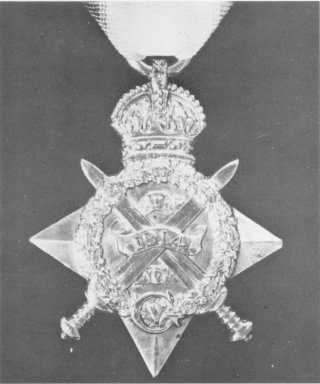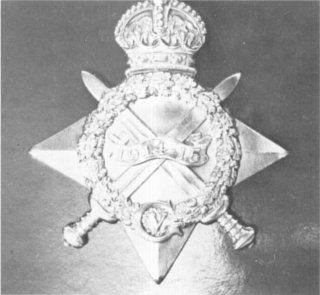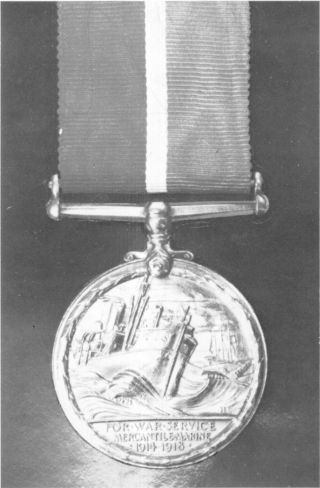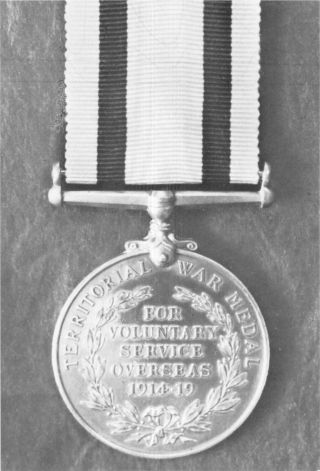

 The South African
The South African
by D. R. Forsyth
It was on 4 August 1914 that the British Government started to act; they assumed control of the railways and the bank rate increased to 10 per cent. The Germans besieged Liege and the Reichstad voted an equivalent of £265 million. In France a war fund of 5000 million francs was voted and the British Parliament voted £ 1000 million. Mr Asquith delivered a great speech pregnant with noble patriotism, and the war started: a war that was to last until 1918.
British troops landed in France on 5 August 1914. The Kaiser called them the ‘contemptible little army from a nation of shopkeepers’ and later said that they ‘fought like lions but were led by donkeys’. They stood, fought and died against the might of the German Army between August and November 1914 and later with pride called themselves ‘The Old Contemptibles’.
This medal, also known as the Mons Star, was awarded to the men who saw active service between 5 August and midnight 22/23 November 1914. Amongst collectors the 1914 Star is considered to be akin to a decoration.

1914 Star (Obverse)
The 1914-1915 Star, with a similar story to the Mons Star, was awarded to all who saw service in any theatre of war, including the Indian N.W. Frontier in 1915, but not to those who only saw service for which the Africa General Service or Sudan 1910 Medals were granted. It is interesting to note that the Sudan Medal had 16 clasps and some of them, such as Mongalla 1915-1916 and Nyima 1917-1918, covered some of the same period as did the 1914- 915 Star.
Those who had qualified for the 1914 Star could not also receive the 1914-1915 Star.

1914-1915 Star (Obverse)
This medal, in silver, commemorates some of the bloodiest battles of the war - battles fought under the most trying and terrible conditions that the world had ever seen - rats, water, mud, sleet, snow, gas and disease to mention but a few. South Africans are particularly reminded of DelviIle Wood, part of the Battles of the Somme - there were too Arras, Ypres, Lys, Passchendaele and more. When it came to the award ot the British War Medal, had it not been for the costs involved, some 49 battle clasps would have been awarded. These, in fact, were announced in an Admiralty Order in 1920. There were to be clasps (inter alia) for Heligoland, the Falkland Islands, Jutland, Belgian Coast, Dardanelles, Gallipoli, Suez Canal, Red Sea, German East Africa, German South West Africa, Mine Clearance, Siberia 1914-1919, Russia and the Black Sea 1918-1920.
As a collector, I wonder whether or not I should be grateful to the British Government for not issuing clasps although a clasp to the medal would certainly have given to it a far greater collector’s interest.
Over five and a half million of the silver medals were issued and an additional 100 000 bronze awards were made to Native, Indian and Chinese Labour Corps.

British War Medal
1914-1920 (Obverse)
Said by some to be the ugliest medal issued. I do not agree, for there is, apart from the obverse which is the same as the British War Medal, a lot of detail on the reverse - the bows of a merchant ship ploughing through heavy seas, with a sailing vessel in the background and a sinking U-boat in the right foreground. The ribbon, so aptly designed, is green, white and red, said to be representative of the port, the starboard, and the steaming lights, of a ship.
This medal was awarded by the Board of Trade to members of the Merchant Navy who served at least one voyage in a danger area, or six months at sea in certain named occupations, such as pilot ships or lighthouse vessels.
Two things about this medal interest me: firstly that the medal was issued by the Board of Trade, and secondly that those on lighthouse vessels also received the medal for I have read accounts of raids by E-boats on these lighthouse vessels.

Mercantile Marine War Medal
1914-1918 (Reverse)
Although known as the Victory Medal 1914-1918 the reverse carries the inscription ‘The Great War For Civilisation 1914-1919’ (bilingual in the case of South African recipients). The War was over, that great conflict for civilization, and a new Utopia awaited the dazed and punchdrunk world. Who will ever know what the costs were in men and money? There were widows by the hundreds of thousands and fatherless children. The blind and the maimed however lived on, dreaming of a new and happy world.
This bronze medal was awarded to all who also received either of the Stars, and, with few exceptions, the British War Medal. A mention in despatches saw an oak leaf attached to the ribbon of this medal. The naming is in faint impressed capitals, giving the recipient’s number, rank, name and unit except in the case of officers who only had their ranks and names and initials given.

Victory Medal
1914-1918 (Obverse)
I do have some other figures which I would like to quote: Battles of Ypres: First Ypres 19 to 22 November 1914: British casualties, all ranks, 58 155; Second Ypres 22 April to 25 May 1915: killed and wounded, all ranks, 60 260; Third Ypres 31 July to 10 November 1915: killed and wounded, all ranks, 310 971; Fourth Ypres 9 April 1918: killed and wounded, all ranks, 44 100.
What price victory? - particularly as so many of those killed had no known grave, having been torn to pieces by artillery fire.
One of the rarer medals of the period, authorised in 1920 for members of the Territorial forces, including nursing sisters who, on or before 30 September 1914, undertook to serve outside the United Kingdom and did so between the outbreak of the war and the armistice, and were not eligible for either the 1914 or 1914-1915 Stars.
The reverse of the medal shows ‘For Voluntary Service Overseas 1914-1919’ - so here is another case where the inscription on the medal in no way compares with the regulations, for the regulations mention a final date of ‘armistice’ which was at 11 a.m, on 11 November 1918.

Territorial Force War Medal
1914-1919 (Reverse)
Return to Journal Index OR Society’s Home page
South African Military History Society / scribe@samilitaryhistory.org